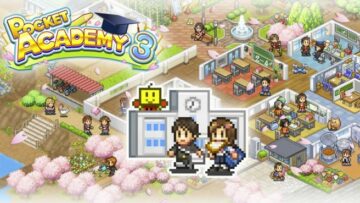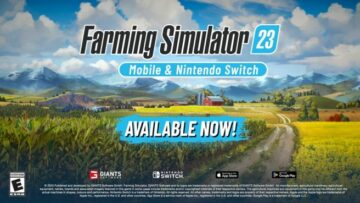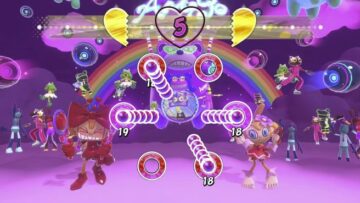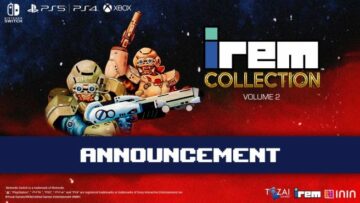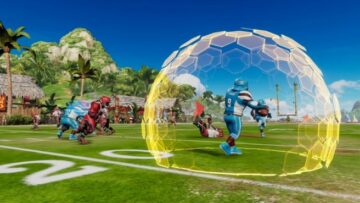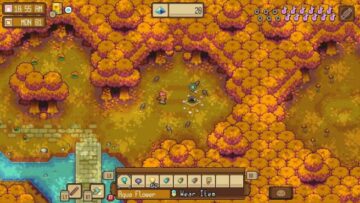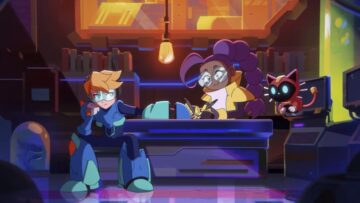One of the standout indie games we played at Summer Game Fest Play Days was Little Kitty, Big City, an exploration-driven game that was highlighted in a recent Nintendo Direct a while back (check out our new hands-on impressions here). It may be the first release from Double Dagger Studio, but it’s far from being the first project for game director Matt Wood, who’s contributed to numerous influential games released over the past twenty-five years. During our hands-on demo, we had the chance to chat with Matt about his experience developing Little Kitty, Big City, what made him want to make a game about a cat in the first place, and much more.
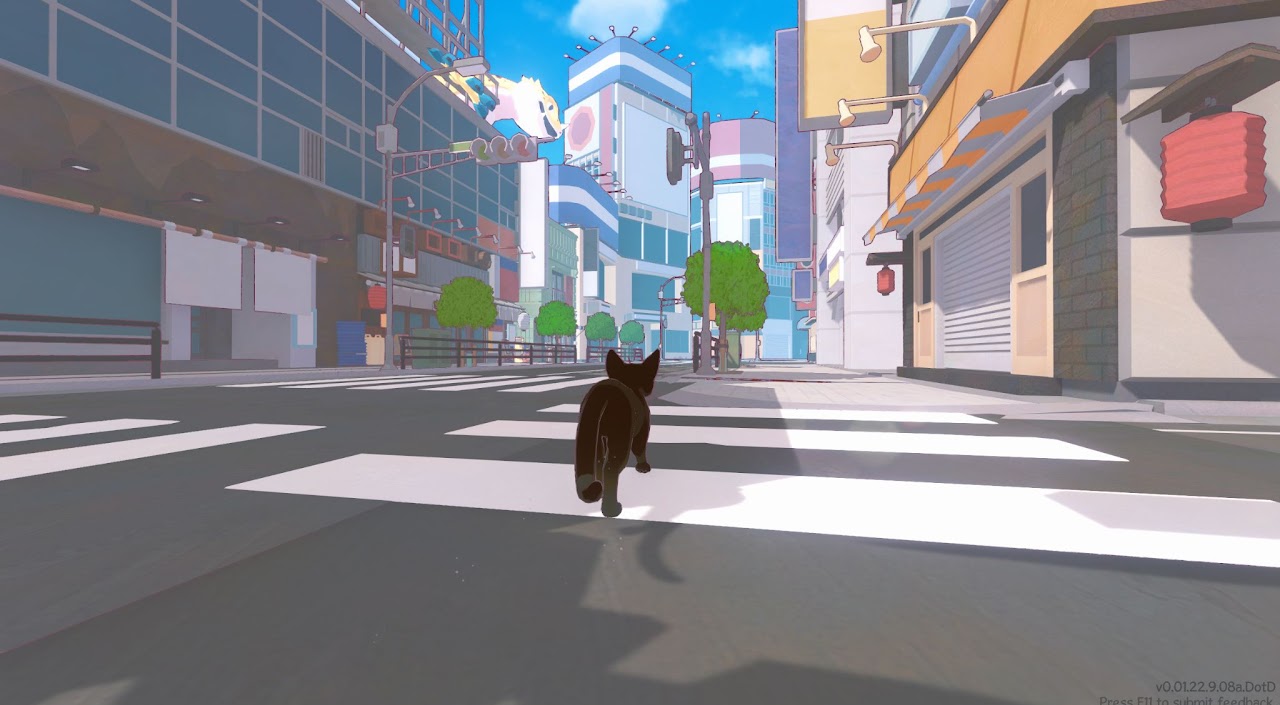

Before this project, you worked at Valve for a long time on franchises like Half-Life, Portal and Counter-Strike. What led you decide that you wanted to go off and start your own studio?
I think it was just time. You know, I’ve been at Valve for a long time and looking at the future of what I would end up doing there, I realized that I wanted to do something different, and I wanted to go in more interesting directions. I wanted more challenge. So that was kind of my main motivation, you know, figure out ways to challenge myself to do more interesting things and make games that I think more people can play.
So, you felt like it was time to pursue a new creative challenge, basically?
Yeah. Sometimes you get into these positions where it’s hard to see where you’re going to be in a few years… or, if you can see it, you’re not real happy with it. That’s kind of how I was. So, I took some risks and created the studio, but when I created it, I wasn’t thinking about this game at all – it was just like, I just want to make something, I don’t know what it is. And this just kind of ended up coming out of it. I mean, I’m happy it did! It’s been a lot of fun.
This is a super different type of project for you. Why did you decide to work on a project in such a drastically different genre?
You know, I worked on a lot of games that were very… that had a lot of conflict in them, I guess you could say. And I still love to play games like that, and there’s a lot of awesome stuff in those games. But one of the things that I wanted to challenge myself with was to make a game that didn’t rely on all those things. Plus, I’m a dad now. I have kids who, you know, I play games with them. I wanted to be able to make a game that I could play with them, and that other people could play with their kids… that they felt happy about, they felt comfortable with. That they felt like, whether they’re a cat owner or not, they could just be happy the whole time, just get pure entertainment that didn’t derive from conflict, essentially. That kind of stuff is really important to me. For example, in this game, despite the fact that Kitty falls from a really high window, there’s no way to harm the kitty at all. There’s no combat, obviously. It’s just about exploring! It’s about meeting new friends, completing quests, solving puzzles, and a lot of navigation. And collecting hats.
And how did you land on this concept of making a game about a cat, specifically? Was that decided early on, or did the project start in a different direction?
Yeah, when I started it, quite literally the reason this came into being is that I was working with my kids on a little game. I was teaching my kids to program, and we were coming up with little ideas for games. They’re young, so I was doing most of the programing, but they were learning; we were just doing things as we went. And one of the ideas was just a very simple concept of, what if you played as a cat? What kind of environment would be fun for a cat to be in? We see all these really great photos and videos of cats in cities just doing their own thing… like, that sounds awesome, what if we just did that? And so, I mocked the thing up, I worked on it with my kids, and I put up a little video on Twitter; it was literally just a little black cat walking around a city. And it went viral, right? People really took to it, and I was like, “holy moly… okay, well, maybe I should think about this some more.” So, I did, and probably about a year later, I finally kind of came back and said, okay, I’m going to do this for real. And that was it!
I remember that viral tweet you were talking about! It was the #PitchYourGame thing… is that what you’re referring to?
Yeah, it was! Yeah, you’re right.
There have been a couple of cool projects that have come out of that. It’s just so crazy to me how these big projects can manifest from a simple idea.
And it’s funny, because at the time I was working on it was, it was a 2D thing. I was working on some mechanics focused on kind of a match-type game, and very, very different than what this is. So yeah, it’s funny how these things sort of come about.
You guys managed to get Xbox’s attention. That’s a testament to something!
Yeah, they’ve been great, they have been awesome. Nintendo, too. I feel really lucky right now that people are interested in the game.


That’s right, you just reminded me that your game was featured in a Nintendo Direct, too. How did that come together?
I work with a company called Popagenda who has been handling a lot of this for me, so I’m really lucky that they’ve been working on it. But honestly, a lot of people have been reaching out! I’ve just been surprised at how many people… I don’t know, it’s a cute cat, so I guess it’s not surprising, right? From my point of view, I’m really happy if people are interested in it. I just want to make sure that, you know, the game the game is good too, right?
Well, I’m having a good time! As a cat owner myself, one of the first things I noticed when checking out this game was just how incredible all the animation looked.
Oh, thank you! That was one of the things that’s been really important to us; we want to make sure that the people who own cats, who are familiar with cats, recognize that it feels familiar to them. I’m really a big fan of having a nice combination of approachable, stylistic visuals with realistic movements and actions.
So, you must be a cat guy yourself?
Yeah, I’ve got two cats and I’ve had cats most of my life. Yeah, I guess you could say I’m a pretty big fan of cats. I mean, ever since I started working from home, I got to spend all day with my cats. It’s hard to ever want to go to an office again when you can do that, you know?
Tell me more about the city that the kitty will be exploring. Is it based on a real city, or is it more loosely inspired by certain places?
I think the closest that it comes to… people who have been to Tokyo will recognize it as something that might be in Tokyo. But – and it’s hard to do this – but one of the things that I want to do is kind of make it feel familiar for people who’ve been to Tokyo, but also people who have maybe been to Seoul or even Taipei. They have a lot of similarities, so hopefully I captured that feeling.
Exploring the city feels pretty freeform so far. Is the city one big open environment, or is it structured into smaller levels or sections?
So, it is one big environment, but the way it’s designed is that you have access to one section, and then you’ll get access to another section. And then once you get access to that other section, you also get a new ability, which allows you to climb that ivy you see everywhere. It’s one of those cases where it’s part of the environment until you get the ability to climb it, and then you go, “Oh, I can go back and get to all these new places.”
I love the faceless humans that are roaming around the world. What’s the reason driving that type of creative choice?
I wasn’t sure how it was going to land with other people, but the idea was that I wanted to show everything from the cat’s point of view. You’ll notice there’s no real words in the world or anything like that. But humans… the cats see us, I think for the most part, as objects, right? I mean, of course our cats see us as people, we’re real people. But when we’re feeding them or when they need something, we’re just things to them a lot of the time. So, I wanted to make the humans not be too recognizable as humans, so that it felt like from the cat’s point of view, you’re just dealing with “the thing” that acts a certain way or does a certain thing. I think also, the more features you put on a human face, the more people will be interested in that human as a character. Because the humans are just objects in the game, we wanted to represent them appropriately.


So, what was the biggest challenge that you faced making this game?
Well, honestly, within the game itself, the biggest challenge for me was the navigation and the movement of the character. Because, you know, the stuff that I’ve worked on in the past has all been characters that are humanoid. And, you know, when you think about a character’s movement and how it interacts with the world, it’s a vertical thing, right? And as soon as you take a character and you stretch it out so that it’s now having to interact with all these different parts of the world where it moves this way or that way or whatever, and you’re trying to navigate around, I honestly spent way more time on it than I ever anticipated I would spend on it. And there are still issues that I need to fix. I’m not sure I’m going to be 100% happy with it when I release the game – hopefully I will, but we’ll see. But that’s been that’s been a huge challenge.
It’s cool to me how different games are trying to nail the feel playing as an animal in different ways. Stray was going for what I feel was a really realistic approach to movement and physics; there’s a lot of realism in your game too, but I appreciate how different the style and feel of it all is.
Yeah. For me I wanted to strike that balance between, you know, firing those brain neurons of like, this is a cat, and I’ve familiarized myself with the fact that I’m playing the cat, but at the same time having that stylization of feeling like I could make the cat pause in the air and do a Scooby Doo kick right? And it still feels natural in that world, right? So, you try to strike that nice balance between the two and have, you know, crows that talk! And you’ll meet some other characters that are a little bit quirky… and have that all just kind of work. I think when you have a world that’s a little bit too realistic, it’s hard to strike that balance where it’ll feel right.
There have been a lot more of these… I guess you could call them animal-exploration games? Did you feel any inspiration or borrow any mechanics from games like Stray as you developed Little Kitty, Big City? It’s a very different game, I can tell.
I think it definitely motivated us in a way where we realized, hey, this is something that people like, right? In that way, it was a really positive experience. I started working on this before they announced their game, so we didn’t end up in the same place. We went down really different paths because when I started working on this, I honestly didn’t know what kind of game I was going to make. It was, I want to make a game that you play as a cat, and what the heck is that? Well, I spent a lot of time just figuring it out. Honestly, I haven’t played Stray yet. Some of my team members have, but I haven’t. I bought it and I have it on my list, but I haven’t actually had the time to play it.
It looks like there are quite a few tucked-away surprises around the game world. What can players expect as they explore?
Oh, yeah. So, we have little events scattered throughout the game. Like, for example, that soccer ball, there’s a purple soccer goal a little bit further away. In the beginning section there was a green one with the ball right next to the goal. So, we just have little activities that you can do that you get rewarded for, and then as you get further into the game, you’ll find ones that are a little bit harder to do. So, for example, the ball is a little bit further away from the goal and you have to figure out how to get it there. But it’s all optional!
In the final game there’s, there’s a lot more characters to meet and a lot more stuff to do. Like, it was really hard to pare down the stuff just for this demo. There’s a whole other two-thirds of the city beyond that wall over there and some really fun quests. Right after you get past this area, you run into a duck dad who misplaced his ducklings. Basically, he’s a very well-meaning and talkative duck that he gets a little bit lost in his conversations of explaining the history of this and that… and his kids get a little bit bored. So apparently, they took off to find their own activities, so you’re tasked with going to bring them back.


The writing I’ve seen in the demo is really charming so far! It’s made me chuckle. Now, I noticed there’s no objective markers while exploring. What’s the thinking behind that?
Yeah, honestly? I just… I don’t like them. I find it more interesting when players are exploring, like I want to give them that opportunity. I don’t think the world is big enough to need them, but… there’s stuff to find along the way of going from place to place, and I’d rather people make their way to a spot and, you know, be distracted. The whole point of the game is that it’s all about distractions. One of the things I thought about a lot when I started thinking about how the quest system or how the objectives are going to go is that when I play an RPG, and the main objective of the RPG is, “the world is about to end and you’re the only one that can stop it. You need to do it right now!” And you’re like… okay, cool… I’m going to go save this kitten in the tree, I’m going to go help this lady, bake some bread… you know? Like, I love sidequests; a lot of the time they end up being way more interesting than main quests. That concept of having the game just be side quests is kind of the goal.
Yeah, it’s a hard balance to strike. For me personally, sometimes games that lack objective markers can overwhelming when they’re sprawling and spread out, whereas something like this feels easier to parse while exploring.
The games that I’ve worked on my whole life, I really enjoy encouraging players to explore and encouraging to play the game environment as it is, right? I think there are a lot of games that I’ve played that I don’t enjoy, where what they do is you end up “playing the UI”, essentially. Like, you end up playing a game that is just you’re just dealing with markers on the screen, you’re just dealing with UI elements, you’re just dealing with all this stuff. And to me, I want to be immersed in a world; I want to take notice of details, I want to chill out and I want to have this experience. And when you have all these things on the screen, it kind of takes me out of it.
Some people just want to do objective, objective, objective, that sort of thing. And you know, sometimes people might play a game like this and they might go, “well, you know, I want I want to be told what to do at all times.” And that’s okay, right? There’s nothing wrong with that. But I think this is going to be a little bit more catered towards the person who does who wants to just meander, who wants to just find nooks and crannies and find little fun things to do… that’s kind of the goal.
Editor’s Note: This interview was transcribed from an audio recording, and has been lightly edited for clarity and brevity,
Related
- SEO Powered Content & PR Distribution. Get Amplified Today.
- PlatoData.Network Vertical Generative Ai. Empower Yourself. Access Here.
- PlatoAiStream. Web3 Intelligence. Knowledge Amplified. Access Here.
- PlatoESG. Automotive / EVs, Carbon, CleanTech, Energy, Environment, Solar, Waste Management. Access Here.
- BlockOffsets. Modernizing Environmental Offset Ownership. Access Here.
- Source: https://nintendoeverything.com/little-kitty-big-city-interview-double-dagger/
- :has
- :is
- :not
- :where
- $UP
- 2D
- a
- ability
- Able
- About
- access
- actions
- activities
- acts
- actually
- After
- again
- AIR
- All
- allows
- along
- also
- an
- and
- animal
- animation
- announced
- Another
- Anticipated
- any
- anything
- appreciate
- approach
- appropriately
- ARE
- AREA
- around
- AS
- At
- attention
- audio
- away
- back
- Balance
- ball
- based
- Basically
- BE
- because
- been
- before
- Beginning
- behind
- being
- between
- Beyond
- Big
- Biggest
- Bit
- Black
- Bored
- borrow
- bought
- Brain
- bring
- but
- by
- call
- called
- came
- CAN
- captured
- cases
- CAT
- Cats
- certain
- challenge
- Chance
- character
- characters
- check
- checking
- choice
- Cities
- City
- clarity
- climb
- Collecting
- combat
- combination
- come
- comes
- comfortable
- coming
- company
- completing
- concept
- conflict
- contributed
- conversations
- Cool
- could
- Couple
- course
- crazy
- created
- Creative
- Dad
- day
- Days
- dealing
- decide
- decided
- definitely
- Demo
- Design
- designed
- Despite
- details
- developed
- developing
- Development
- DID
- different
- different games
- direct
- direction
- Director
- do
- does
- doing
- Dont
- double
- down
- drastically
- driving
- during
- Early
- easier
- edited
- elements
- encouraging
- end
- enjoy
- enough
- Entertainment
- Environment
- essentially
- Even
- events
- EVER
- everything
- example
- expect
- experience
- explaining
- explore
- Exploring
- Face
- faced
- faceless
- fact
- Falls
- familiar
- fan
- far
- featured
- Features
- feeding
- feel
- fest
- few
- Figure
- final
- Finally
- Find
- firing
- First
- Fix
- focused
- For
- friends
- from
- fun
- funny
- further
- future
- game
- Games
- get
- Give
- Go
- goal
- going
- good
- great
- Green
- Guy
- had
- Handling
- hands-on
- happy
- Hard
- harder
- harm
- Have
- having
- he
- help
- High
- Highlighted
- him
- his
- history
- Home
- Honestly
- Hopefully
- How
- How To
- HTTPS
- huge
- human
- Humanoid
- Humans
- i
- idea
- ideas
- if
- immersed
- important
- in
- incredible
- Indie
- Influential
- Inspiration
- inspired
- interact
- interacts
- interested
- interesting
- Interview
- into
- issues
- IT
- itself
- just
- kick
- kids
- Kind
- Know
- Lack
- lady
- Land
- later
- learning
- Led
- levels
- Life
- lightly
- like
- List
- little
- Long
- long time
- looked
- looking
- LOOKS
- lost
- Lot
- love
- made
- Main
- make
- Making
- managed
- many
- May..
- maybe
- me
- mean
- mechanics
- Meet
- meeting
- Members
- might
- misplaced
- more
- most
- motivated
- Motivation
- movement
- movements
- moves
- much
- must
- my
- Natural
- Navigate
- Navigation
- Need
- Neurons
- New
- next
- nice
- Nintendo
- no
- note
- nothing
- Notice..
- now
- numerous
- objective
- objectives
- objects
- of
- off
- Office
- Okay
- on
- once
- ONE
- ones
- only
- open
- Opportunity
- or
- Other
- our
- out
- over
- own
- owner
- part
- parts
- past
- pause
- People
- person
- Personally
- Photos
- Physics
- Place
- Places
- plato
- Plato Data Intelligence
- PlatoData
- Play
- played
- players
- playing
- plus
- Point
- Point of View
- Portal
- positions
- positive
- pretty
- probably
- process
- Program
- project
- projects
- put
- Puzzles
- quest
- quests
- rather
- reaching
- real
- realistic
- realized
- really
- reason
- recent
- recognize
- recording
- release
- released
- rely
- remember
- represent
- rewarded
- right
- risks
- RPG
- Run
- Said
- same
- Save
- say
- scattered
- Screen
- Section
- sections
- see
- seen
- Seoul
- should
- show
- side
- similarities
- Simple
- since
- smaller
- So
- so Far
- Soccer
- Solving
- some
- something
- Soon
- specifically
- spend
- spent
- Spot
- spread
- standout
- start
- started
- Still
- Stop
- Stray
- strike
- structured
- studio
- style
- such
- summer
- Super
- sure
- surprised
- surprises
- surprising
- system
- Take
- takes
- talking
- Teaching
- team
- Team members
- tell
- testament
- than
- thank
- that
- The
- The Future
- the world
- their
- Them
- then
- There.
- These
- they
- thing
- things
- Think
- Thinking
- this
- those
- thought
- throughout
- time
- times
- to
- together
- tokyo
- too
- took
- towards
- tree
- try
- tweet
- two
- two-thirds
- type
- ui
- until
- us
- valve
- vertical
- very
- Video
- Videos
- View
- viral
- visuals
- walking
- Wall
- want
- wanted
- wants
- was
- Way..
- ways
- we
- WELL
- went
- were
- What
- whatever
- when
- whereas
- whether
- which
- while
- WHO
- whole
- why
- will
- window
- with
- within
- wood
- words
- Work
- worked
- working
- working from home
- world
- would
- writing
- Wrong
- year
- years
- yet
- you
- young
- Your
- yourself
- zephyrnet

